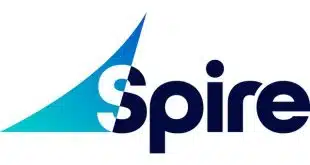Contactless payment took another step forward in the mass-transit market with the announcement on Thursday by two key New York City-area transportation agencies that they will run a pilot of MasterCard Worldwide's PayPass system next year. The Port Authority will install contactless readers at 40 turnstiles in all 13 of its PATH commuter train stations in New Jersey and Manhattan. At the same time, New Jersey Transit will equip some 104 buses running on two routes between New York and New Jersey with contactless readers. The eight-month pilot, which is expected to begin early in 2009, will be compatible with a similar test of contactless payment that a separate New York subway authority, the Metropolitan Transit Agency, began in July 2006 with readers at 80 fare gates in 30 stations on the Lexington Avenue line. The MTA plans to expand that pilot this year, though it has not released details. The New Jersey Transit-Port Authority trial will be open only to MasterCard PayPass cards and fobs for the first two months, then will be available to holders of devices that work on other platforms, such as Visa payWave and American Express Co.'s ExpressPay, for the duration of the pilot. The transit agencies selected MasterCard after considering proposals submitted through a public solicitation. A release from the agencies and MasterCard says the card network's bid “was the highest rated and lowest cost” option. In addition to speeding up the time it takes commuters to pay their fares, the tap-and-go pilot is expected to ease their way between transit systems. “The region's diverse workforce relies on our extensive mass-transit network to commute and we need to find a way to take a bit of the hassle out of trips that often span two or three separate systems,” said Anthony E. Shorris, executive director of the Port Authority, in a statement. “We are looking for simple fare payment solutions that will work everywhere. This is a step in that direction, and it's the right direction to go.” With contactless payment, a card or fob equipped with an antenna-and-chip inlay sends card-account data to a point-of-sale reader via radio waves. The process replaces the conventional card swipe and has been found to be faster than cash and swipes with signature in some tests. Researcher Aite Group LLC estimates about 40,000 merchant outlets in the U.S. have installed contactless readers since the banks and card networks began rolling out systems nearly three years ago. While it sees that number growing to 271,000 by 2014, merchant penetration will remain low, increasing from 0.5% to 2.5%. Aite blames the low rate of acceptance on factors including merchants' reluctance to replace cash payments with more expensive card transactions. Also, many merchants view card swipes without signatures?an option the card networks permit for transactions under $25 in certain venues?as just as fast as contactless, according to Aite. But mass transit's need for speed of throughput and a way to move commuters quickly from, say, buses to trains, may offer a fruitful market for contactless. The Port Authority-New Jersey Transit announcement follows not just the MTA pilot but also an announcement last month by the Bay Area Rapid Transit authority in San Francisco that it is testing contactless transactions using mobile phones and near-filed communication technology (Digital Transactions News, Jan. 30). New York City has also required taxis to install contactless readers in a move that has proven controversial, with some drivers complaining of costs and in some reported cases abusing passengers who have tried pay with a card.
Check Also
‘Debit With Benefits’ Debuts As Spire Launches Its Pay by Bank Service
What may be the first merchant-branded, automated clearing house-based pay-by-bank service has launched. Pay with …





